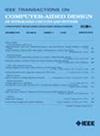Effective and Efficient Parallel Qubit Mapper
IF 2.9
3区 计算机科学
Q2 COMPUTER SCIENCE, HARDWARE & ARCHITECTURE
IEEE Transactions on Computer-Aided Design of Integrated Circuits and Systems
Pub Date : 2024-11-18
DOI:10.1109/TCAD.2024.3500784
引用次数: 0
Abstract
Quantum computing has been accumulating tremendous attention in recent years. In current superconducting quantum processors, each qubit can only be connected with a limited number of neighbors. Therefore, the original quantum circuit should be converted to a hardware-dependent circuit, and this process is called qubit mapping and routing, in which typically extra SWAP gates need to be inserted. Due to a limited qubit lifetime, one of the main objectives of qubit mapping and routing is to minimize the circuit depth, which is a time-consuming process. By studying several existing greedy mappers, we extract and analyze two patterns that significantly impact the mapping and routing performance. Then, we propose a sliding window method named SWin, which dramatically reduces the computational cost with negligible performance degradation. For devices with constrained executable circuit depth, we propose SWin+, which introduces adaptive circuit slicing methods with VF有效和高效的并行量子比特映射器
近年来,量子计算受到了极大的关注。在目前的超导量子处理器中,每个量子位只能与有限数量的邻居连接。因此,原始的量子电路应该转换为硬件相关的电路,这个过程称为量子比特映射和路由,在这个过程中通常需要插入额外的SWAP门。由于量子比特的寿命有限,量子比特映射和路由的主要目标之一是最小化电路深度,这是一个耗时的过程。通过研究几种现有的贪婪映射器,我们提取并分析了两种显著影响映射和路由性能的模式。然后,我们提出了一种滑动窗口方法SWin,该方法在性能几乎可以忽略的情况下显著降低了计算成本。对于可执行电路深度受限的器件,我们提出了SWin+,引入了VF $2+{+}$子图同构初始映射方法的自适应电路切片方法。与最先进的贪心方法相比,SWin的有效深度降低可达39%,在大规模电路中平均降低16%。此外,SWin可以很容易地修改为噪声感知,而深度降低将在实际执行中产生更好的性能。此外,SWin在各种芯片耦合中仍然表现良好。SWin+显著提高了处理效率,实现了高达22.3\times $的改进,平均增加了6.1\times $。同时保持了变换电路深度的有效性。
本文章由计算机程序翻译,如有差异,请以英文原文为准。
求助全文
约1分钟内获得全文
求助全文
来源期刊
CiteScore
5.60
自引率
13.80%
发文量
500
审稿时长
7 months
期刊介绍:
The purpose of this Transactions is to publish papers of interest to individuals in the area of computer-aided design of integrated circuits and systems composed of analog, digital, mixed-signal, optical, or microwave components. The aids include methods, models, algorithms, and man-machine interfaces for system-level, physical and logical design including: planning, synthesis, partitioning, modeling, simulation, layout, verification, testing, hardware-software co-design and documentation of integrated circuit and system designs of all complexities. Design tools and techniques for evaluating and designing integrated circuits and systems for metrics such as performance, power, reliability, testability, and security are a focus.

 求助内容:
求助内容: 应助结果提醒方式:
应助结果提醒方式:


